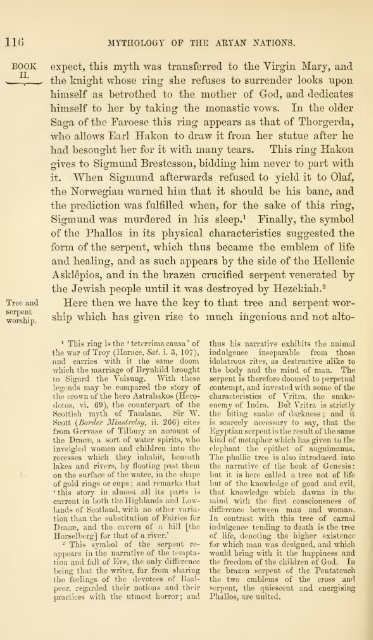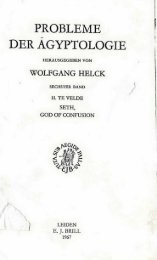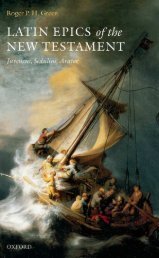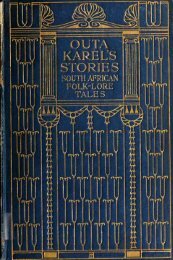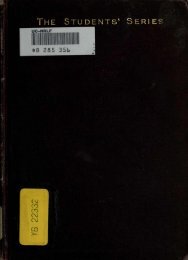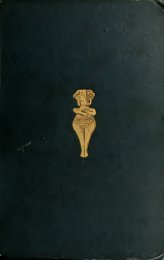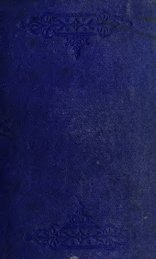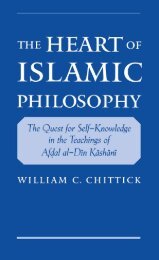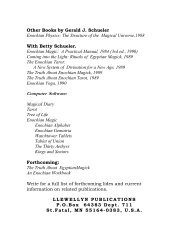Create successful ePaper yourself
Turn your PDF publications into a flip-book with our unique Google optimized e-Paper software.
BOOK<br />
II.<br />
MYTHOLOGY OF THE ARYAN NATIONS.<br />
expect, this myth was transferred to the Virgin Mary, and<br />
the knight whose ring- she refuses to surrender looks upon<br />
himself as betrothed to the mother of God, and dedicates<br />
himself to her by taking the monastic vows. In the older<br />
Saga of the Faroese this ring appears as that of Thorgerda,<br />
who allows Earl Hakon to draw it from her statue after he<br />
had besought her for it with many tears. This ring Hakon<br />
gives to Sigmund Brestesson, bidding him never to part with<br />
it. When Sigmund afterwards refused to yield it to Olaf,<br />
the Norwegian warned him that it should be his bane, and<br />
the prediction was fulfilled when, for the sake of this ring,<br />
Sigmund was murdered in his sleep. 1<br />
Finally, the symbol<br />
of the Phallos in its physical characteristics suggested the<br />
form of the serpent, which thus became the emblem of life<br />
and healing, and as such appears by the side of the Hellenic<br />
Asklepios, and in the brazen crucified serpent venerated by<br />
the Jewish people until it was destroyed by Hezekiah. 2<br />
Here then we have the key to that tree and serpent wor-<br />
ship which has given rise to much ingenious and not alto-<br />
> This ring is the ' teterrima causa ' of<br />
the war of Troy (Horace, Sat. i. 3, 107),<br />
and carries with it the same doom<br />
which the marriage of Brynhild brought<br />
to Sigurd the <strong>Vol</strong>sung. With these<br />
legends may be compared the story of<br />
the crown of the hero Astrabakos (Herodotos,<br />
vi. 69), the counterpart of the<br />
Scottish myth of Tamlane. Sir W.<br />
Scott (Border Minstrelsy, li. 266) cites<br />
from Gervase of Tilbury an account of<br />
the Dracae, a sort of water spirits, who<br />
inveigled women and children into the<br />
recesses which they inhabit, beneath<br />
lakes and rivers, by floating past them<br />
on the surface of the water, in the shape<br />
of gold rings or cups ; and remarks that<br />
'this story in almost all its parts is<br />
current in both the Highlands and Lowlands<br />
of Scotland, with no other varia-<br />
tion than the substitution of Fairies for<br />
Dracse, and the cavern of a hill [the<br />
Horselbcrg] for that of a river.'<br />
2 This symbol of the serpent reappears<br />
in the narrative of the temptation<br />
and fall of Eve, the only difference<br />
being that the writer, far from sharing<br />
the feelings of the devotees of Baal-<br />
peor, regarded their notions and their<br />
practices with the utmost horror; and<br />
thus his narrative exhibits the animal<br />
indulgence inseparable from those<br />
idolatrous rites, as destructive alike to<br />
the body and the mind of man. The<br />
serpent is therefore doomed to perpetual<br />
contempt, and invested with some of the<br />
characteristics of Vritra, the snakeenemy<br />
of Indra. But Vritra is strictly<br />
the biting snake of darkness ; and it<br />
is scarcely necessary to say, that the<br />
Egyptian serpent is the result of the same<br />
kind of metaphor which has given to the<br />
elephant the epithet of anguimanus.<br />
The phallic tree is also introduced into<br />
the narrative of the book of Genesis<br />
but it is here called a tree not of life<br />
but of the knowledge of good and evil,<br />
that knowledge which dawns in the<br />
mind with the first consciousness of<br />
difference between man and woman.<br />
In contrast with this tree of carnal<br />
indulgence tending to death is the tree<br />
of life, denoting the higher existence<br />
for which man was designed, and which<br />
would bring with it the happiness and<br />
the freedom of the children of God. In<br />
the brazen serpent of the Pentateuch<br />
the two emblems of the cross and<br />
serpent, the quiescent and energising<br />
Phallos, are united.<br />
:


